
Chinese Optics Letters杂志简介
Chinese Optics Letters于2003年创刊,由中国光学学会和中国科学院上海光学精密机械研究所主持,中国激光杂志社出书,美国光学学会举世发行的国际性英文版学术期刊。
Chinese Optics Letters借鉴刊时即坚决走国际化办刊路线,其标的目的是急迅、全方位地报道国际光学规模中的最新理论研究、科技收效和创新技巧。
Chinese Optics Letters此刻已被SCI-E、EI、CA、CSA和MSB-S等世界闻名检索机构收录。2014年SCI劝化因子为1.851。
Chinese Optics Letters是我国独一全部反应激光周围最新成就的英文版专业学报类期刊。首要公布我国在激光、光学、原料应用及激光医学方面卓有成就的科学家的研究论文。
Chinese Optics Letters为月刊,每月10号出书。审稿周期约30天,均匀揭晓周期约100天。COL选用OCIS编码对论文进行分类,利便作者、读者查阅。每篇论文都还有DOI号,便于在CrossRef系统中被交织援用。
Chinese Optics Letters杂志投稿宗旨
光纤光学与光通信、激光器与激光光学、原料、非线性光学、量子光学
Chinese Optics Letters杂志特色(不代表本站看法)
1. Title
The title should be concise but informative. Avoid beginning with an article or a preposition. The words "new" or "novel" should be avoided in the title and the text for legal reasons. Titles may be edited by the publisher to facilitate computer search.
2. Author names and Affiliations
Author names should be given in full and consistent form to facilitate indexing. Affiliations and postal addresses for all authors should appear on the title page.
3. Abstract
The abstract should be no longer than 100 words. It should be informative, without descriptive words or citations, and contain the major conclusions and quantitative results or other significant items in the paper. Together with the title, the abstract must be adequate as an index to all the subjects treated in the paper, and will be used as a base for indexing.
4. OCIS Codes
OCIS codes should be provided to help with indexing. This set of codes was formulated by the Optical Society of America and well-known in the optical research world. OCIS codes are available on Chinese Optics Letters’ web page and the OSA publication web pages. Each manuscript must be given 2-4 OCIS codes below the abstract, and the principal index code should be placed first.
5. Equations
Equations should be punctuated and aligned to bring out their structure, and numbered consecutively in round brackets on the right-hand side of the page.
Notation. Notation must be legible, clear, compact, and consistent with standard usage. In general, acronyms should be defined at first use.
Variables and Vectors. Set single-letter variables in italics (Eg. M). Set vectors in boldface (Eg. m). Functions, derivative "d," abbreviations, and multi-letter identifiers should be set in roman (plain) type (Eg. α, cos, ∫...dx).
Fences. For simple bracketing the usual order of parentheses and brackets is { [ ( { [ ( ) ] } ) ] }.
Bit and Byte. The standard abbreviations for bit and byte are b and B, respectively. To avoid confusion, these units should be spelled out in most cases (1 bit, 20 GB). Display equations should be broken and aligned for two-column display unless spanning across two columns is essential. Equations should be centered with equation numbers set flush right. For Math Type math, use the Format Equations feature to format all equations as Times + Symbol 10. Note: There must be a blank line space above and below each displayed equation.
6. References
References should be numbered consecutively in the order in which they are first referenced in the body of the manuscript. Two references [2,3] should be included together, separated by a comma, and three or more consecutive references should be indicated by the bounding numbers and an en dash [1-4]. When compiling your references, be sure to include the titles of articles. COL requires this information before a paper can be sent to peer review. The reference titles will subsequently be removed by copy editors before they are published, so this information is not included in the length estimate sent to authors when a positive decision is made by the editor. All reference authors should be included in the reference list but when reference authors are mentioned in the text, use surnames only (unless further clarity is needed), and use "et al." and first author name when three or more authors are given. The format of references is as follows:
Journal paper
1. Q. Ji, X. Ma, J. Sun, H. Zhang, and Y. Yao, "Novel method for measurement of effective cavity length of DBR fiber", Chin. Opt. Lett. 8, 398 (2010).
Book
2. N. Bloembergen, Nonlinear Optics (Springer, 1965).
Paper in published conference proceedings
3. R. E. Kalman, "Algebraic aspects of the generalized inverse of a rectangular matrix", in Proceedings of Advanced Seminar on Generalized Inverse and Applications 111 (1976).
SPIE proceedings
4. S. K. Griebel, M. Richardson, K. E. Devenport, and H. S. Hinton, "Experimental performance of an ATM-based buffered hyperplane CMOSSEED smart pixel array", Proc. SPIE 3005, 254 (1997).
Paper accepted for publication
5. H. Qi, M. Zhu, W. Zhang, K. Yi, H. He, and J. Shao, “Dependence of wavefront errors on the nonuniformity of thin film", Chin. Opt. Lett. (to be published).
Internet links
6. A. G. Ramm, H. Wang, and J. Ye, "Invisible obstacles", http://www.arxiv.org/abs/math-ph/0608034 (June 1, 2011).
Patent
7. K. Zhang, J. Zhang, R. Wang, R. Guo, J. Wang, and K. Peng, “All solid state single frequency and frequency-doubled laser” (in Chinese) Chinese Patent ZL98125474.8 (2000).
7. Figures and Tables
Figures should be suitable (resolution above 300 dpi) for immediate reproduction and embedded in the text. They should be set as one column wide (6-8 cm) if possible unless two-column display is essential. In the figures, the main lines should be about 0.3 mm in width, and the assistant lines 0.15 mm. Notations in the figures should be distinct and consistent with the same ones in the text, and their font size will be 7-9 pt. Figures should also be uploaded as separate figure files. Each figure should have its own caption. Color Art is Online Only, and free to authors.
Tables must be numbered in order of appearance and identified with appropriate titles. The table title, which should be brief, goes above the table. Note that tables are usually typeset, not scanned (tables cannot be electronically reduced in size). Tables should be set in one column wide if possible and be placed near their first mention in the body.
8. Article Length and Proof
Note that Chinese Optics Letters has a limit of five printed pages. If a paper exceeds this limit, it must be shortened before the paper is accepted. If the page proof is over the five-page limit, the proof must be shortened before the paper can be assigned to a final issue. Authors should use the COL Word or LaTeX templates to prepare manuscripts to facilitate length checking.
Chinese Optics Letters杂志收录与荣誉
EI 工程索引(美)
国家图书馆馆藏
知网收录(中)
维普收录(中)
文摘与引文数据库
CA 化学文摘(美)
CSCD 中国科学引文数据库根源期刊(含扩大版)
万方收录(中)
上海图书馆馆藏
SCI 科学引文索引(美)
统计源中央期刊(中国科技论文中央期刊)
智能推荐
-

人才研究杂志社投稿技巧(各杂志社的投稿方式)2023-08-10 人才研究杂志简介人才研究杂志内容丰硕、想法强壮,目下以年刊表面发行,以马列主义、毛泽东想法、邓小平表面和“三个代表”紧急想法为向导,贯彻党的教导宗旨和“双百宗旨”
-
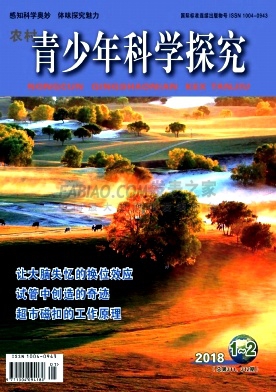
农村青少年科学探究杂志社投稿技巧(农村科学实验杂志)2023-08-09 墟落青少年科学探讨杂志简介乡下青少年科学探讨(CN:13-1383/N)创刊于1987年,由河北省教诲厅主管,河北省教训传布核心主持的教导刊物
-
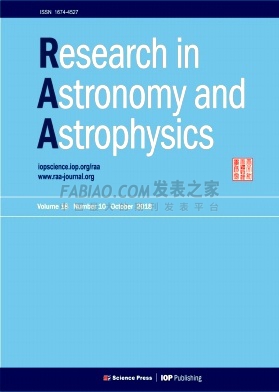
Research in Astronomy and Astrophysics杂志社投稿技巧(the2023-08-11 ResearchinAstronomyandAstrophysics杂志简介ResearchinAstronomyandAstrophysics创刊于1981年,
-
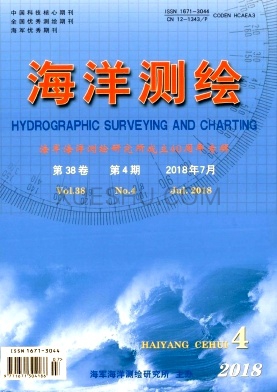
海洋测绘杂志社投稿技巧(海洋测绘期刊)2023-08-10 海洋测绘杂志简介海洋测绘杂志(CN:12-1343/P)内容丰盛、思维健全,自1981年创刊起,以双月刊步地发行,刊物对外踊跃扩张宣扬,致力于提升杂志质量与陶染
-
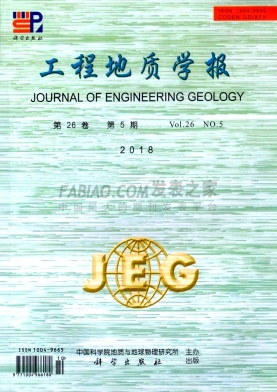
工程地质学报杂志社投稿技巧(水文地质工程地质期刊好投吗)2023-08-09 工程地质学报杂志简介工程地质学报(CN:11-3249/P)创刊于1993年,由中国科学院主管、中国科学院地质与地球物理研究所主理,依托于中国科学院页岩气与地质工
-

科技致富向导杂志社投稿技巧2023-08-12 科技致富诱导杂志简介科技致富引导1993年创刊,是经科技部和国度信息出书总署接受,由中国科学技术协会科普部、山东省科学技术协会主管主理的国家级刊物,为ASPT来历
-
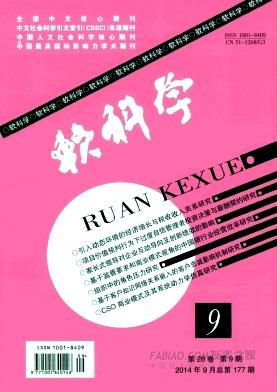
软科学杂志社投稿技巧(软科学投稿经验)2023-08-09 软科学杂志简介软科学杂志(CN:51-1268/G3)内容丰盛、思维健全,自1987年创刊起,以月刊体式格局发行,刊物对外主动扩展宣扬,致力于提升杂志质量与劝化
-

科学杂志社投稿技巧(科学与社会投稿经验)2023-08-12 科学杂志简介科学杂志创刊于1915年,由上海世纪出书(集团)有限公司主管,上海科学技术出版社有限公司主理的学术期刊,杂志以马列主义、毛泽东思维、邓小平表面和“三个
-
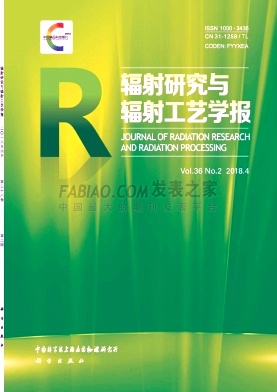
辐射研究与辐射工艺学报杂志社投稿技巧(热辐射论文)2023-08-10 辐射研究与辐射工艺学报杂志简介辐射研究与辐射工艺学报(CN:31-1258/TL)内容丰裕、思维矫健,1983年创刊,今朝以双月刊格式方式发行,刊物对外主动扩展宣
-

农业生物技术学报杂志社投稿技巧(农业工程学报投稿经验)2023-08-10 农业生物技术学报杂志简介本站紧要处置期刊订阅及增值电信营业中的新闻服务营业(互联网新闻服务),并非农业生物技术学报官方网站
-

科学发展杂志社投稿技巧(科学与社会投稿经验)2023-08-11 科学成长杂志简介科学成长杂志(CN:31-217/C)内容富厚、脑筋壮健,28年创刊,今朝以月刊式样发行,刊物对外主动扩张传布,致力于升高杂志质量与陶染
-

中国基础科学杂志社投稿技巧(中国社会科学报投稿经验)2023-08-11 中国基础科学杂志简介中国基础科学杂志(CN:11-4427/G3)内容丰盛、思惟矫健,自1999年创刊起,以双月刊方式发行,刊物对外主动扩展传布,致力于进步杂志质
